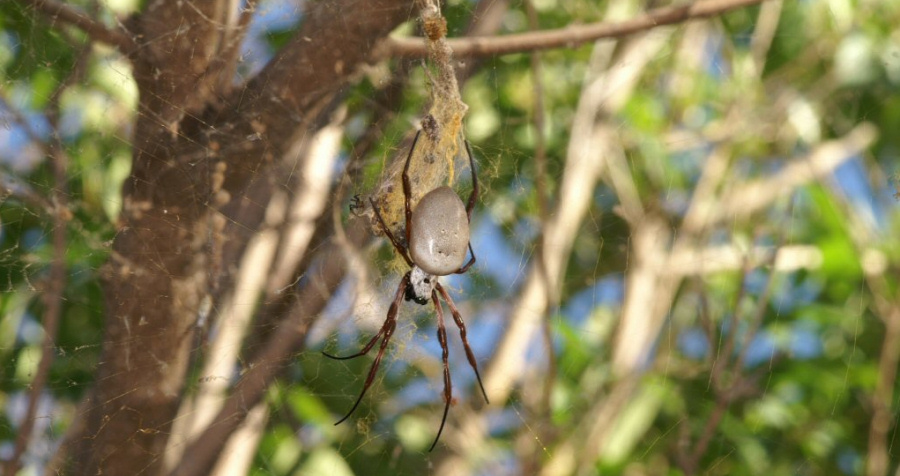
Family Nephilidae
ß Home

The golden orb weavers are one of the largest spiders found in Australia.
Their webs with diameters of over 1 meter can be found hanging off sign posts, in or between trees.
Female spiders can measure up to 45 mm while the smaller males measure only 6 mm. The male is often found in or around the web of the female.
Beside the male and the female boarders resides in the web.
They are called quicksilver, dewdrop or droplet spider (Argyrodes antipodianus)
because their silvery body shines like drops of water in the sun.
If you look closely at the web you can notice that the snares have a golden color. The web is extremely strong. So strong that even small birds stick in the net.
The two large and easily spotted Nephila species, Nephila plumipes and Nephila edulis, are very similar in appearance. But there are differences: |
|
| Nephila edulis | Nephila plumipes (old name Nephila ornata ) |
Longer/more tufted hairs on legs |
Shorter/less tufted hairs on legs |
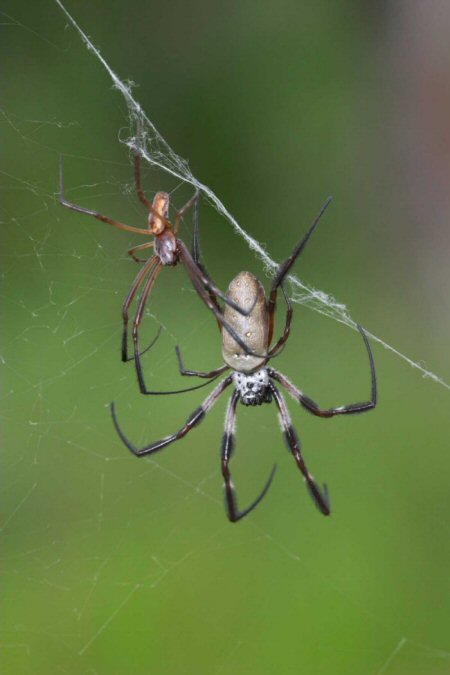 |
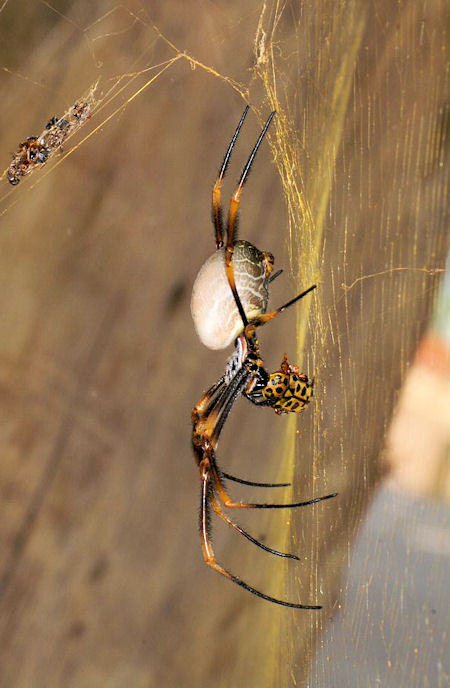 |
| Nephila edulis female and male | Nephila plumipes female |
 |
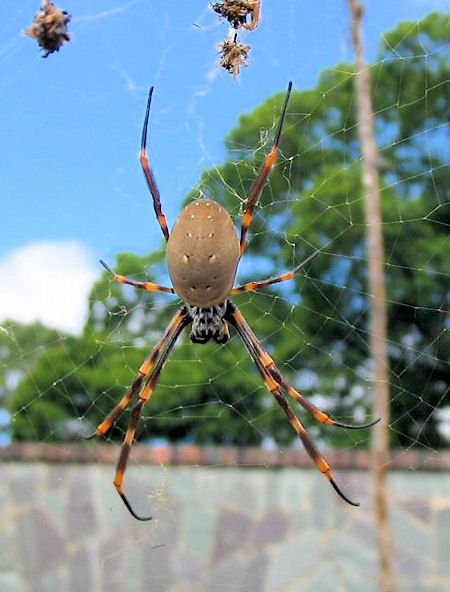 |
| Nephila edulis female | Nephila plumipes female |
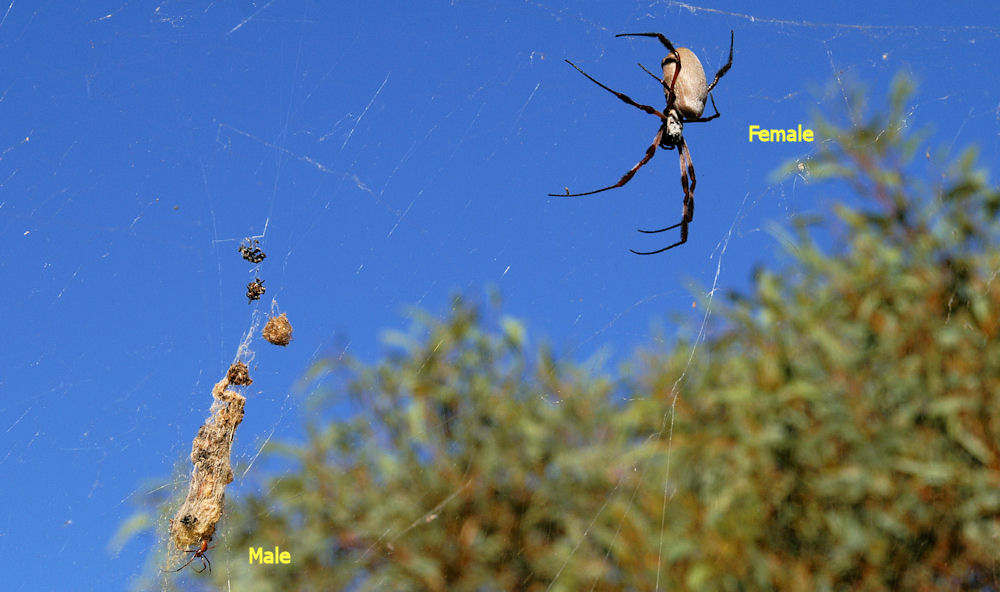 |
|
| Nephila edulis male and female | |
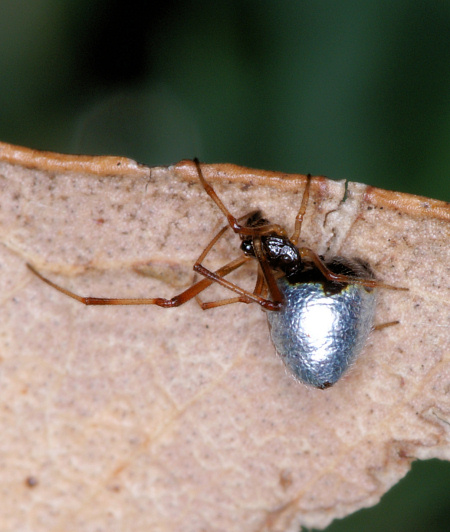 |
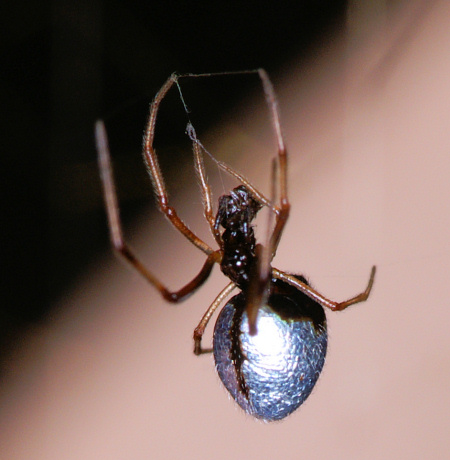 |
| Argyrodes antipodianus | Argyrodes antipodianus. Length 2 mm.Fam Therriidae |
 |
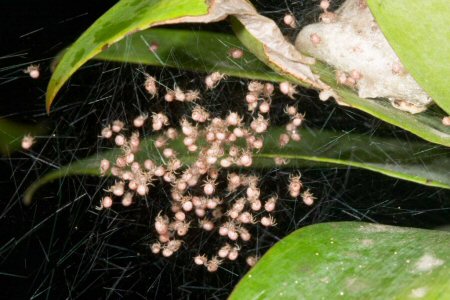 |
| Nephila edulis male | Young Nephila spiders. |
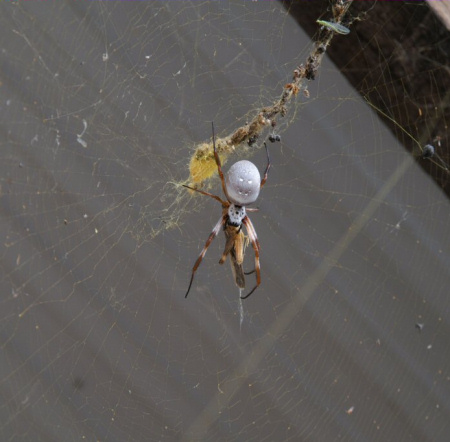 |
|
| Nephila edulis female. Note the golden web colour | Nephila ornata juvenile female |
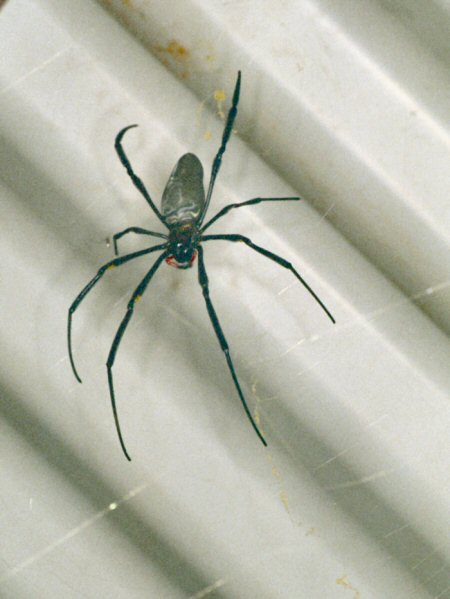 |
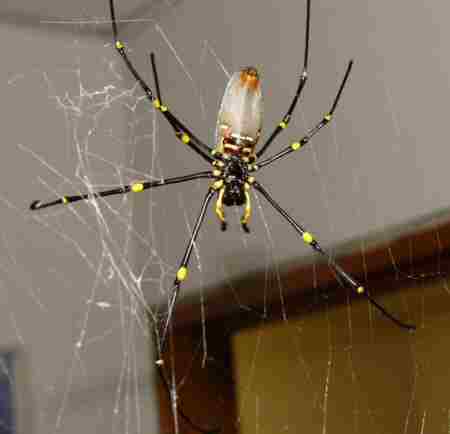 |
| Nephila pilipes. Note the yellow spot on it front legs and the red fangs. | Nephila pilipes (was Nephila maculata) (by Marie Herbenstein) |
|
|
| Nephila pilipes | Nephila pilipes |
Nephila pilipes |
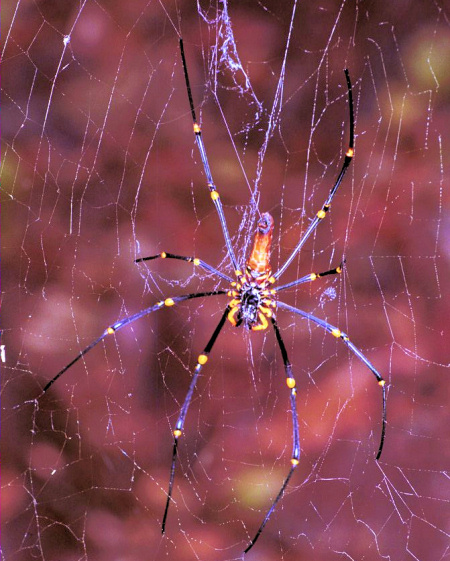 |
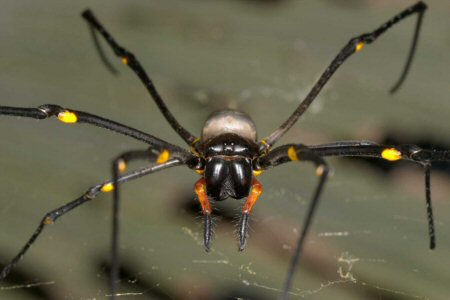 |
The first, second and fourth pairs of legs of juvenile (young) females have dense hairy brushes. When the spider matures these brushes disappear. The female does not hang her egg-sac in the web but digs a pit and then covers it with plant debris and soil. It is thought that the yellow colouring is used to attract prey. |
| Nephila pilipes |
 |
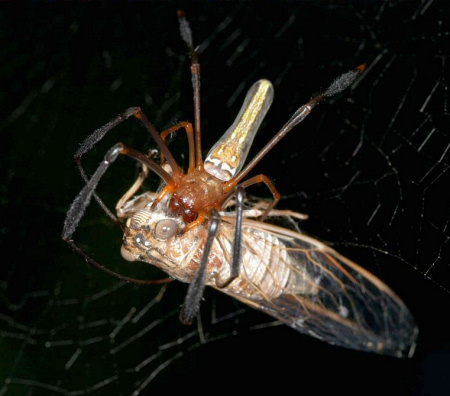 |
| Nephila ZZ079 | Nephila ZZ284 |
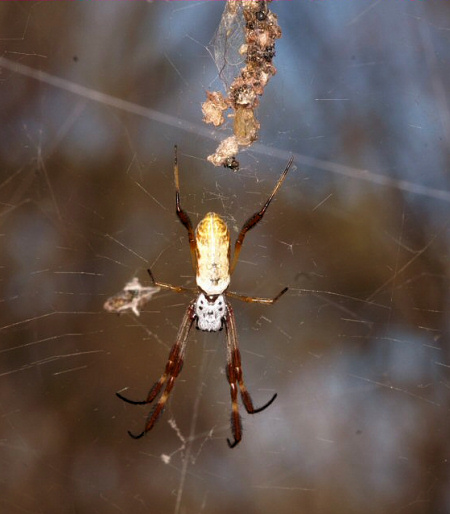 |
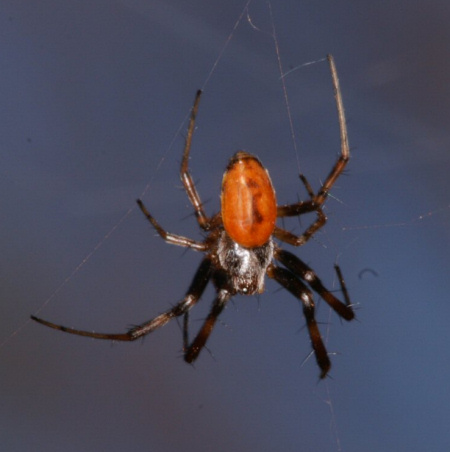 |
| Nephila ZZ310 Female | Nephila ZZ310 Male |
ß Home
21 march 2023
Ed Nieuwenhuys, Ronald Loggen 1997, 2002, Jurgen Otto 2005
Copyright ã 1997-2023